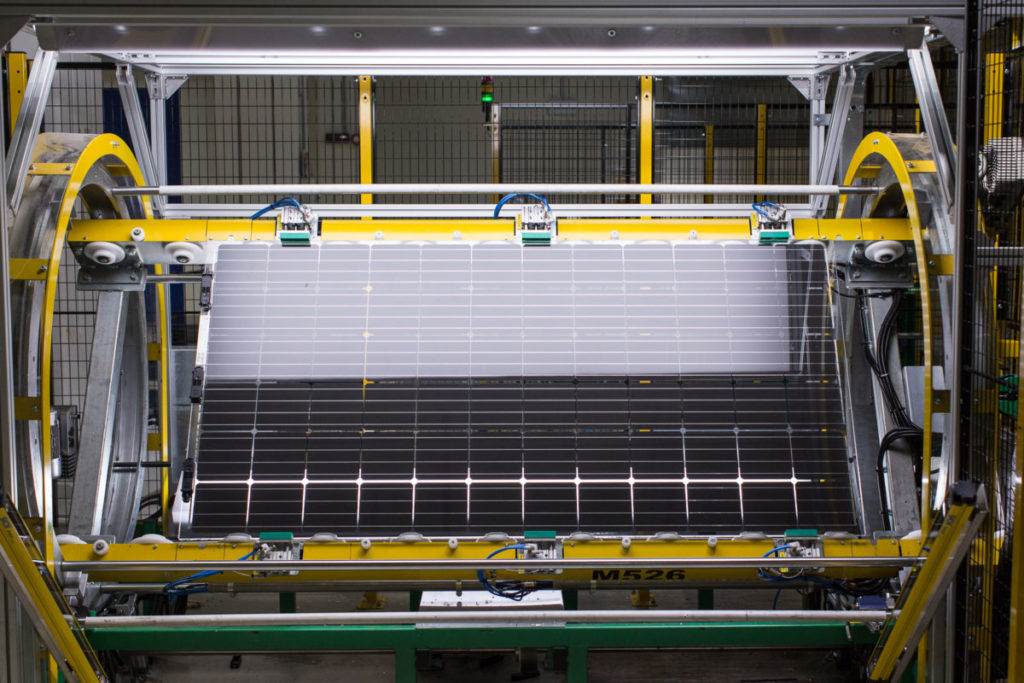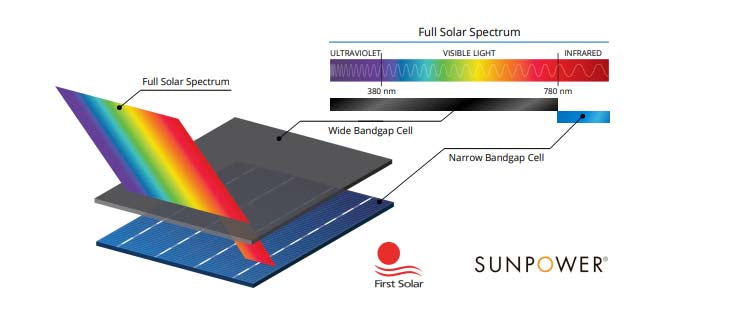https://www.pv-magazine-australia.com/2022/04/02/weekend-read-the-pieces-that-make-chinas-pv-puzzle/
Weekend read: The pieces that make China’s PV puzzle

In recent procurement bidding, 500W+ modules accounted for more than of total purchases from several major state-owned energy enterprises in China.
.
From pv magazine 03/2022
There are many pieces to the puzzle of China’s vast PV market and manufacturing landscape. Narrowing this down to just five that take in the industry’s bigger picture in this vast and dynamic country is no easy task. But from a pile of many, the following five emerge as particularly instructive: prices, cell technology, power, size, and the ongoing pandemic and government response to it.
Module prices
Only two years ago, module price trends were not even a question. However, since late 2020, along with cost increases of several key materials and components, PV module prices have headed north. As it is the first time in close to a decade since price increases have been a feature of the module supply landscape, the market has taken time to adjust. The good news for module buyers is that an end appears to be on the horizon.
In December 2021, and then in January 2022, slight module price declines were evident. Since module prices are a key factor for PV system cost and return on investment, the question remains: Will module prices keep going down? To solve this puzzle, two factors – the balance of supply and demand, and the cost of polysilicon – will be critical.
Supply and demand
Because of the two years of price rises and associated delays to PV projects caught out by pricing concerns, China’s installation market did not grow substantially in 2021, but it didn’t decline, either. And vast installation demand continues to exist. Major Chinese state-owned energy enterprises, including both national and provincial power corporations, are all under political pressure regarding targets for carbon reduction and renewable energy installation. They will have to accept a reasonable price to meet their targets.
According to plans released by most of China’s state-owned energy enterprises for the 14th Five-Year Plan (2021-25) period, the new 2025 PV installation target will be around 240GW in total. On top of this are small- and medium-sized companies, either state-owned or private, and China’s residential market. If targets are met, at least 60GW will be installed in each coming year, on average.
Similar emission-reduction targets are also in place outside of China. Many countries have proposed ambitious installation solar targets for 2022 and beyond. BloombergNEF expects global installations of 228GW for solar PV in 2022, and IHS Markit predicts 221GW of new PV this year, representing growth of around 21% year on year.
The China Photovoltaic Industry Association (CPIA) estimates that domestic installations will be a minimum of 70GW and will remain “very sensitive to module price.” A source within the CPIA explained to pv magazine how the price level of PV modules will influence installations: “The price of CNY 1.9/W (US$0.30/W) for PV modules is merely acceptable, while CNY 1.8 will make it much more popular among investors, and if the price went down to CNY 1.7/W or below, there will be a boom of installations. And the module price will not be a concern anymore.”
Polysilicon costs
The cost of polysilicon is a crucial factor affecting module prices, and was a key driver of PV module price increases in 2021. From the end of 2020, when prices were at CNY 70/kg, polysilicon prices peaked at CNY 270/kg in October. With a slight decline after the peak, polysilicon prices remain at CNY 230/kg to CNY 250/kg thus far in 2022.
The polysilicon price rise and the resulting run on supply, was driven by a fear of shortages. However, with lots of new capacity being released in 2022, supply tension of polysilicon will be relieved.
Jessica Jin, senior PV analyst at IHS Markit, told pv magazine that “with new capacity released gradually, the polysilicon supply in 2022 can fulfil module capacity of 240GW, which is higher than estimated yearly installations.” Jin also estimates listed module prices will drop to CNY 1.7 at the end of 2022 because of a possible wafer price war.
Most industry insiders believe the polysilicon price will remain at a high level in the first quarter of 2022, starting to decline in the second quarter, and fall considerably in the third quarter and beyond – a trend that will make significant price cuts to PV modules possible.
GW-scale efficiency
The high-efficiency game came in 2022 and remains dominated by two technologies: tunnel oxide passivated contact (TOPCon) and heterojunction (HJT).
Investors in TOPCon cell production are largely integrated PV giants that are upgrading existing PERC lines. The vertically integrated giants usually have gigawatts or tens of gigawatts of PERC cell capacity, and TOPCon presents as a potential upgrade. The ideal scenario is to keep investments small, extend the PERC line lifetime, and also continue to retain technical leadership. Such producers do have the option to develop HJT technology but prefer to limit production to a stage of lab R&D or a pilot line scale, for technology tracking and reserves.
Since TOPCon cells can command a higher price than PERC cells – around CNY 0.07/W to CNY 0.1/W – with the potential risk in marketing and sales confusion to existing lines, especially in a time of high price PV modules, few PV companies have decided to fully invest so far.
JinkoSolar is perhaps the only module maker in top 10 that has confirmed commissioning TOPCon cell capacity with mass production lines, at 8GW. Longi has approved an investment plan of 18GW of new cell capacity and just started the construction. Trina Solar has 10GW under construction with a TOPCon option to upgrade. Canadian Solar and JA Solar confirmed that their TOPCon was still at pilot scale. Outside the top 10, Jolywood, the TOPCon veteran, had around 2GW capacity in the second half of 2021 and an approved expansion plan to 16GW.
HJT capacity
HJT requires more capital investment than TOPCon at present. At the end of January 2022, only 1.5GW of annual HJT capacity was completed in China, with another 4.4GW under construction, including Tongwei’s 1GW lines at its Jintang base – still being optimised to increase yield and enhance product performance. Another 500MW was commissioned by Huasun in Anhui province and construction started on 2GW more in November 2021. Golden Glass is processing construction of 1.2GW lines, Akcome and HYM each have 600MW.
Even with these plans, the marketing and sales of HJT cells is still not easy. Considering the higher cost, at around CNY 0.08/W to CNY 0.12/W over PERC cells, plus a weaker brand in China, few investors or installers are willing to try this new product. It will be very hard for HJT to achieve gigawatt-level shipments in 2022.
The situation for TOPCon is much better. With leading PV companies backing the technology, Jinko and Longi are preparing to make their mark in promoting TOPCon products. It is possible for any of them to reach gigawatt shipments this year.
High-powered modules
High-powered modules muscled onto the market by virtue of the new larger wafer sizes, becoming a better choice for installers due to lower balance-of-system (BOS) costs at the system level. Since the beginning of the pandemic, many components have seen cost increases, starting with PV glass and EVA in 2020, and polysilicon, aluminium and inverters in 2021. Facing high module prices, installers became extremely cost sensitive and desperately sought savings.
High-powered PV modules, usually with 500W or even 600W per piece, can significantly reduce the levelised cost of electricity (LCOE) of a PV project, and become more and more popular in both utility scale and distributed PV segments in China.
From the recent procurement bidding of several major China state owned energy enterprises, the 530W+ module has accounted for more than 80% of total purchasing. The share of high-powered modules for international markets is lower due to time lag of promotion and some conservative overseas customers preference for more mature products. But this is also changing fast.
Todd Li, president of Trina Solar Asia Pacific told pv magazine that sales of high-powered module types grew fast and in the third quarter of 2021, more than 80% of shipments came from their ultra-high-power Vertex 600W+ series module in the Asia-Pacific region. Longi and several other leading module makers experienced the same trend.
Studies by Energy Trend also showed the transition from 166 mm or smaller wafer-based module to 182 mm and 210 mm wafer-based module was faster than expected. High-powered modules (530 W+) accounted for less than 10% of total shipment by end of 2020, while the figure grew to around 50% in the fourth quarter of 2021. In 2022, the total shipment of 182 mm and 210 mm high-powered module will account for around 70% of total installations.
M10 or G12
It is a mere two and a half years since Longi first promoted its 166 mm wafer, and the evolution of wafer sizes since then has been astonishing. A series of wafer sizes were introduced by different companies and eventually concentrated in 182 mm (M10) and 210 mm (G12).
The main supporter for 182 mm is Longi, the original proponent and strongest supporter, and its partners or competitors like Runergy, Lu’An, Jinko, JA Solar, and Zhongyu, among others.
The league of 210 mm contains more diversified players including Trina Solar, Zhonghuan, Risen, Tongwei, Shangji, and Zhongyu. Trina Solar stated in a conference with investors that with efforts of equipment suppliers, wafer manufacturers, cell and module makers, inverter suppliers, racking and tracker manufacturers and even framework and packaging suppliers, most problems and barriers during the process from shipment to onsite installation have been removed.
It is not easy to say whether 182 mm or 210 mm will gain ascendancy. Energy Trend’s statistics of the installation market shows they almost have the same shipments in 2021, but one fact is illustrative: Each newly invested line, whether wafer, cell or module, is planned to be compatible with 210 mm, even by 182 mm supporters. No manufacturer dares to invest lines with compatibility only for 182 mm.
In 2022, the wafer capacity of 182 mm might be more than that of 210 mm. But with better LCOE and BOS performance, the 210 mm modules are expected to win more shipments over time.
Supply chain
In contrast to most other countries, China adopted and has persevered with its zero-Covid strategy since the early stages of the pandemic, aiming to eliminate every single case among its 1.4 billion population across a vast territory. With great efforts of both the government and all Chinese people, the pandemic in China was generally under good control, and only sporadic cases occurred. However, due to China’s strict anti-Covid measures, sporadic cases could cause area lockdowns, a suspension of normal life, and a disrupted supply chain.
In May 2021, infections in Shenzhen caused the shutdown of Yantian port, the world’s fourth-largest port, for around one and a half months. According to China International Forwarding Association (CIFA), more than 3 million containers were jammed in the port and delayed for normal shipment.
At end of 2021, Xi’an, a city in central-western China, was entirely locked down due to an outbreak of the Covid-19 Delta variant, and thousands of factories were shut down. At the time of writing, Suzhou, an important industrial city close to Shanghai, closed its industrial zone because of new Omicron cases.
China faces a final dilemma. Measures thus far have been severe, which has resulted in China’s Covid-related deaths remaining low, and has minimised supply chain disruptions where possible. But China will eventually reopen to the world. This could result in fresh supply chain disruption if the approach to living with the virus is taken. Balancing zero-Covid with industrial output are the final pieces to the puzzle of China’s PV progress in 2022.
Author: Vincent Shaw
This content is protected by copyright and may not be reused. If you want to cooperate with us and would like to reuse some of our content, please contact: editors@pv-magazine.com.
<



